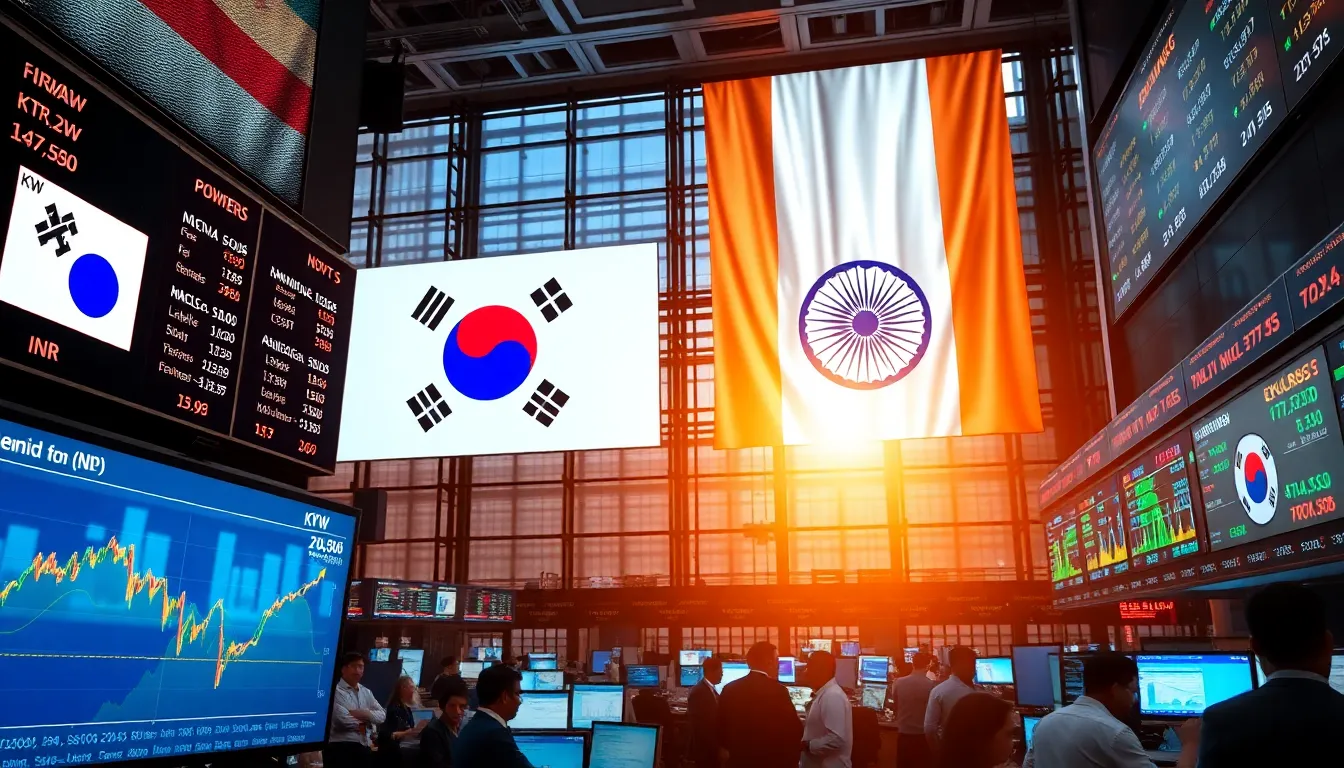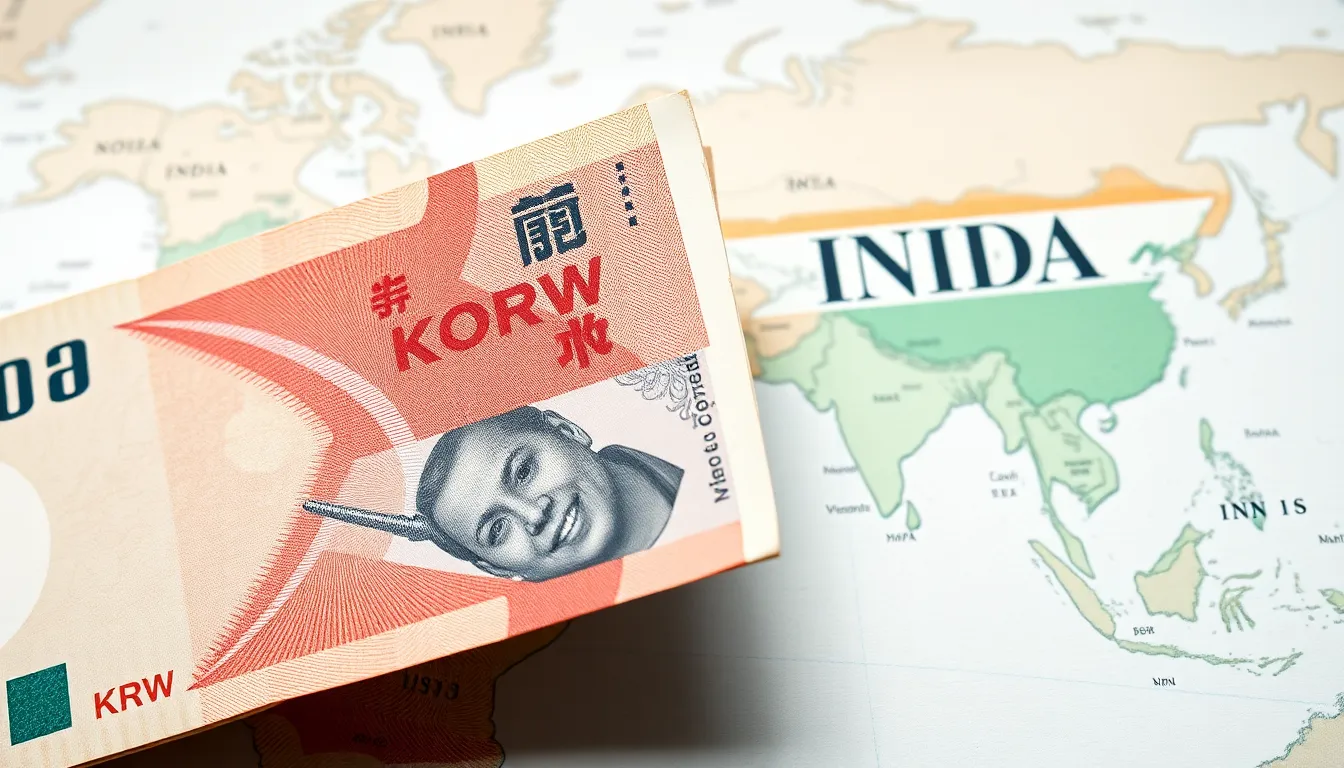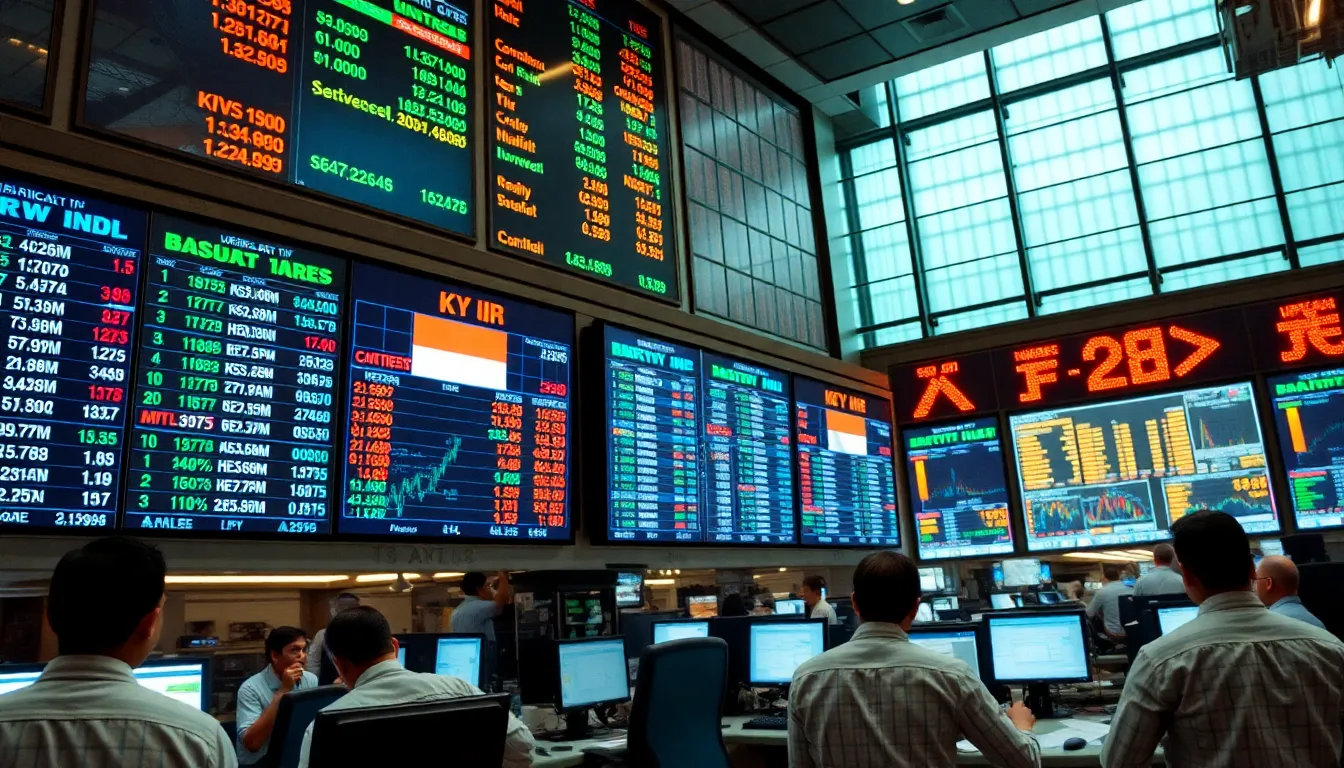Navigating the world of currency exchange can feel like trying to solve a Rubik’s Cube blindfolded. With the KRW to INR exchange rate constantly shifting, understanding how these two currencies interact is crucial for anyone looking to invest, travel, or simply satisfy their curiosity. Whether you’re planning a trip to South Korea or just wondering why your favorite K-drama subscription suddenly costs more, knowing the exchange rate can save you from some financial headaches.
Table of Contents
ToggleOverview of KRW to INR Exchange Rate
Understanding the KRW to INR exchange rate reveals significant insights for various financial activities. The South Korean won (KRW) and the Indian rupee (INR) fluctuate based on multiple economic factors, such as market demand and geopolitical events. Investors and travelers alike must stay informed about these changes to manage costs effectively.
Current exchange rates indicate oscillations that can influence purchase power between South Korea and India. For instance, recent data from financial markets shows that 1 KRW equals approximately 0.062 INR, but this value experiences frequent shifts throughout the day. A continuous review of these rates allows individuals to make informed financial decisions.
Factors affecting the KRW to INR rate include interest rates, inflation, and economic performance of both countries. South Korea typically maintains a low inflation rate, while India’s economy is characterized by rapid growth and fluctuations. Economic indicators such as GDP and trade balances provide further context to the exchange rate movements.
Currency trends reflect global economic conditions, and the interaction between KRW and INR serves as a barometer for regional stability. Monitoring this exchange rate not only facilitates better travel budgeting but also aids in investment evaluations. Currency converters and financial news platforms offer real-time updates, benefiting those engaged in cross-border transactions.
Examining historical data offers additional perspectives on how KRW to INR rates behave over time. Longitudinal trends demonstrate periods of stability as well as volatility that can impact financial planning. Adapting to these changes ensures that individuals remain proactive in their financial strategies while fostering an understanding of foreign exchange dynamics.
Factors Influencing KRW to INR Exchange Rate



Understanding the factors that influence the KRW to INR exchange rate helps in making informed financial decisions. Various elements contribute to the fluctuations between the South Korean won and the Indian rupee.
Economic Indicators
Economic indicators play a crucial role in shaping currency values. Gross Domestic Product (GDP) growth rates, trade balances, and inflation rates directly impact the exchange rate. South Korea’s economy boasts a history of low inflation, which supports the strength of the KRW. Conversely, India’s rapidly growing economy experiences higher inflation and variable growth rates, affecting the INR’s stability. Investors closely monitor these indicators to gauge currency strength. Interest rates also factor significantly; higher rates in one country can attract foreign investment, boosting the currency’s value relative to others. Current events and economic releases prompt immediate reactions in currency markets, making real-time analysis essential.
Geopolitical Factors
Geopolitical factors significantly influence currency exchange rates as well. Political stability and international relations impact investor confidence. For example, tensions or conflicts in the Asia-Pacific region can lead to fluctuations in the KRW. Likewise, India’s political landscape and relations with neighboring countries can affect the INR’s value. Trade agreements or tariffs between South Korea and India may lead to changes in market sentiment. Economic sanctions can also create instability in currency values. Observing these geopolitical landscapes enables investors to anticipate potential shifts in the KRW to INR exchange rate. Currency traders often pivot their strategies based on evolving geopolitical scenarios to maximize returns and mitigate risks.
Historical Trends of KRW to INR Exchange Rate
Historical trends illustrate the fluctuations in the KRW to INR exchange rate over time. From early 2020 to 2023, the exchange rate experienced notable volatility influenced by both economic and geopolitical factors. An analysis of past data reveals periods of relative stability and considerable swings, impacting both currency values significantly.
In 2020, the exchange rate hovered around 0.058 INR per KRW before showing a gradual increase. By mid-2021, it reached approximately 0.061 INR, reflecting a tendency towards stabilization. Geopolitical events and economic shifts in both South Korea and India contributed to these changes.
Data from 2022 indicates a peak, with rates climbing to about 0.065 INR. Such an increase can often correlate with global economic conditions, impacting investor sentiment. As the world began to recover from the COVID-19 pandemic, currencies faced new pressures, creating further fluctuations in the exchange rate.
March 2023 statistics show that the KRW to INR exchange rate settled at around 0.062 INR. This current value reflects ongoing economic developments, including South Korea’s low inflation rates combined with India’s robust growth. Tracking historical trends assists individuals in predicting future movements, which is essential for travel budgeting and financial planning.
As both countries continue to develop economically, ongoing analysis of the KRW to INR exchange rate will reveal further insights. Serious investors and travelers benefit from grasping these trends, ensuring informed financial decisions.
Current Exchange Rate Analysis
The KRW to INR exchange rate continues to reflect dynamic market conditions. Recent data shows 1 KRW equals approximately 0.062 INR, but fluctuations occur frequently due to various economic influences.
Market Trends
In recent months, market trends indicate increased volatility of the KRW to INR exchange rate. Data reveals that geopolitical tensions and economic performance significantly affect these trends. Analysts observe that fluctuations correlate with shifts in investor sentiment, especially following global economic events. South Korea’s stable economic environment contrasts with India’s growth-driven inflation, leading to varying demand for both currencies. As economic indicators emerge, traders closely monitor these dynamics, adjusting their strategies based on real-time information. Frequent updates on these market trends help investors make informed decisions for their portfolios.
Predictions for the Future
Experts predict potential fluctuations in the KRW to INR exchange rate in the upcoming months. Economic forecasts suggest that interest rates and inflation rates in both countries may play crucial roles. If South Korea continues to maintain low inflation while India navigates higher growth rates, currency values could shift accordingly. Major geopolitical developments in the Asia-Pacific region might further influence trading behaviors and investor confidence. Additionally, analysts emphasize the importance of staying informed about global economic conditions, as they provide essential context for assessing future exchange rate movements. Monitoring these indicators allows individuals to adapt their financial strategies proactively.
Understanding the KRW to INR exchange rate is essential for anyone engaging in financial activities related to South Korea and India. The interplay of economic indicators and geopolitical factors creates a landscape of constant change. By keeping an eye on these variables individuals can make informed decisions that align with their financial goals.
As the exchange rate continues to fluctuate it’s crucial to stay updated on market trends and economic developments. This proactive approach not only aids in budgeting for travel and investments but also enhances overall financial literacy. Adapting strategies based on real-time analysis can lead to better financial outcomes in an ever-evolving currency market.







